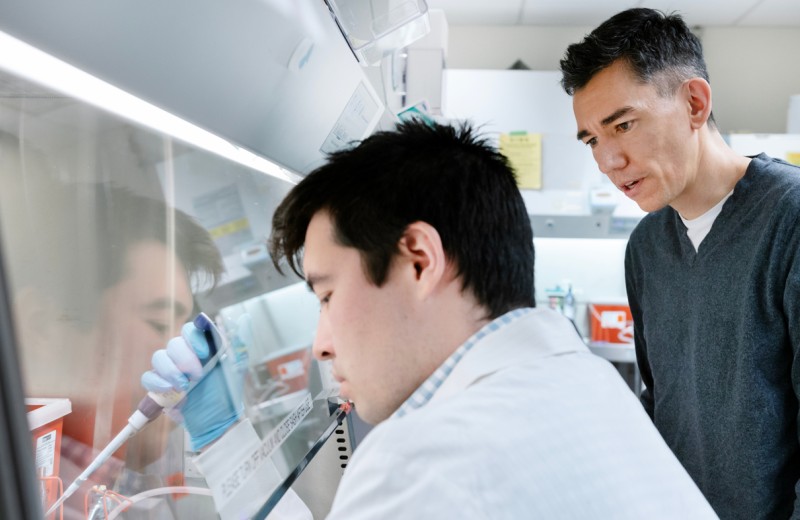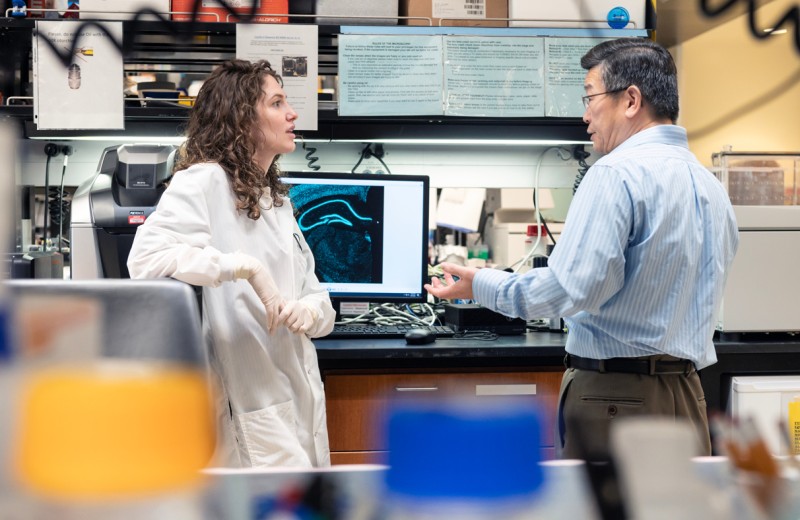
SAN FRANCISCO, CA—Scientists at the Gladstone Institute of Neurological Disease (GIND) have uncovered new approaches to reduce toxic proteins in Alzheimer's disease (AD) and other neurodegenerative diseases. The results might lead to new treatments for these diseases.
“We examined a protein called tau that has been strongly implicated in Alzheimer's disease,” said Li Gan, PhD, senior author on the study. “Tau forms toxic protein aggregations in the brains of Alzheimer patients."
Tau is a common protein in the central nervous system where it helps to stabilize the cytoskeleton that supports the structure of neurons. Mutations in tau cause neurodegeneration in human brains, and tau modified by the addition of phosphate groups (p-tau) forms aggregates and damages neurons. Strategies to get rid of p-tau from neurons are sorely needed.
“We do know that levels of an enzyme called SIRT1 are reduced in AD brains and this reduction is associated with the amount of tau aggregates. We also know that SIRT1 is protective in a mouse model of neurodegeneration,” said Dr. Gan. “But we didn't know how all of this fits together.”
One important clue was that SIRT1 is a deacetylase, an enzyme that removes acetyl groups from proteins. Like phosphorylation, acetylation regulates many different cellular functions. “Because of this, we wanted to know if tau is acetylated,” said Dr. Gan.
In this study, published in the September 23 issue of the journal Neuron, Dr. Gan's group report that, in fact, tau is acetylated. Furthermore, they found that patients at early and moderate stages of AD had elevated levels of tau acetylation.
The researchers showed that inhibiting SIRT1 increased levels of both the acetylated tau and the p-tau in neurons grown in culture dishes.
The team then wondered if inhibiting the production of acetylated tau would have an effect. Importantly, when they inhibited p300, an enzyme known to add acetyl groups to proteins, the neurons had much less acetylated tau and toxic p-tau.
The research shows that the clearance of the toxic p-tau is blocked by acetylation. “The abnormally high levels of acetylation at early stages of the disease could lead to the formation of toxic protein aggregates in AD and other neurodegenerative diseases,” explained Dr. Gan.
“This study suggests that interfering with tau acetylation may be a new approach for reducing tau-related pathology,” said Dr. Mucke, director of the Gladstone Institute of Neurological Disease. “In fact, Dr. Gan and her team have already identified a small molecule compound that eliminates toxic p-tau in neurons. It might represent a new class of anti-AD drugs.”
The research team included Gladstone's Sang-Won Min, Seo-Hyun Cho, Yungui Zhou, Sebastian Schroeder and Melanie Ott; UCSF's William Seeley and Eric Huang; Vahram Haroutunian of Mt. Sinai School of Medicine; Chandran Mukherjee, David Meyers and Philip Cole of Johns Hopkins; Yong Shen of Haldeman Laboratory; and Eliezer Masliah of UC San Diego.
The research was supported in part by the Whittier Foundation, S.D. Bechtel Jr. Foundation, NIH, and FAMRI.
Li Gan's primary affiliation is with the Gladstone Institute of Neurological Disease, where she is assistant investigator and where her laboratory is located and her research is conducted. She is also an assistant professor of Neurology at UCSF.
Want to Join the Team?
Our people are our most important asset. We offer a wide array of career opportunities both in our administrative offices and in our labs.
Explore CareersCellular Clean Energy: Can Mitochondria Make More Energy Without Collateral Damage?
Cellular Clean Energy: Can Mitochondria Make More Energy Without Collateral Damage?
New research from Gladstone may help in the development of new therapies that target the problem of cellular energy failure—a hallmark of Parkinson’s, Alzheimer’s, and aging in general
News Release Research (Publication) Alzheimer’s Disease Parkinson’s Disease Neurological Disease Nakamura Lab CRISPR/Gene EditingHow Good Can Overpower Evil in the Genetic Determination of Alzheimer’s Disease
How Good Can Overpower Evil in the Genetic Determination of Alzheimer’s Disease
New research sheds light on protective mechanisms of the “Christchurch mutation”
News Release Research (Publication) Alzheimer’s Disease Center for Translational Advancement Neurological Disease Huang LabStudy on Largest Genetic Risk Factor for Alzheimer’s Points Toward New Drug Target
Study on Largest Genetic Risk Factor for Alzheimer’s Points Toward New Drug Target
Gladstone researchers discovered how the ApoE4 gene variant makes neurons release an inflammatory signaling molecule—and how blocking that release could prevent or treat Alzheimer’s disease
News Release Research (Publication) Alzheimer’s Disease Neurological Disease Huang Lab



